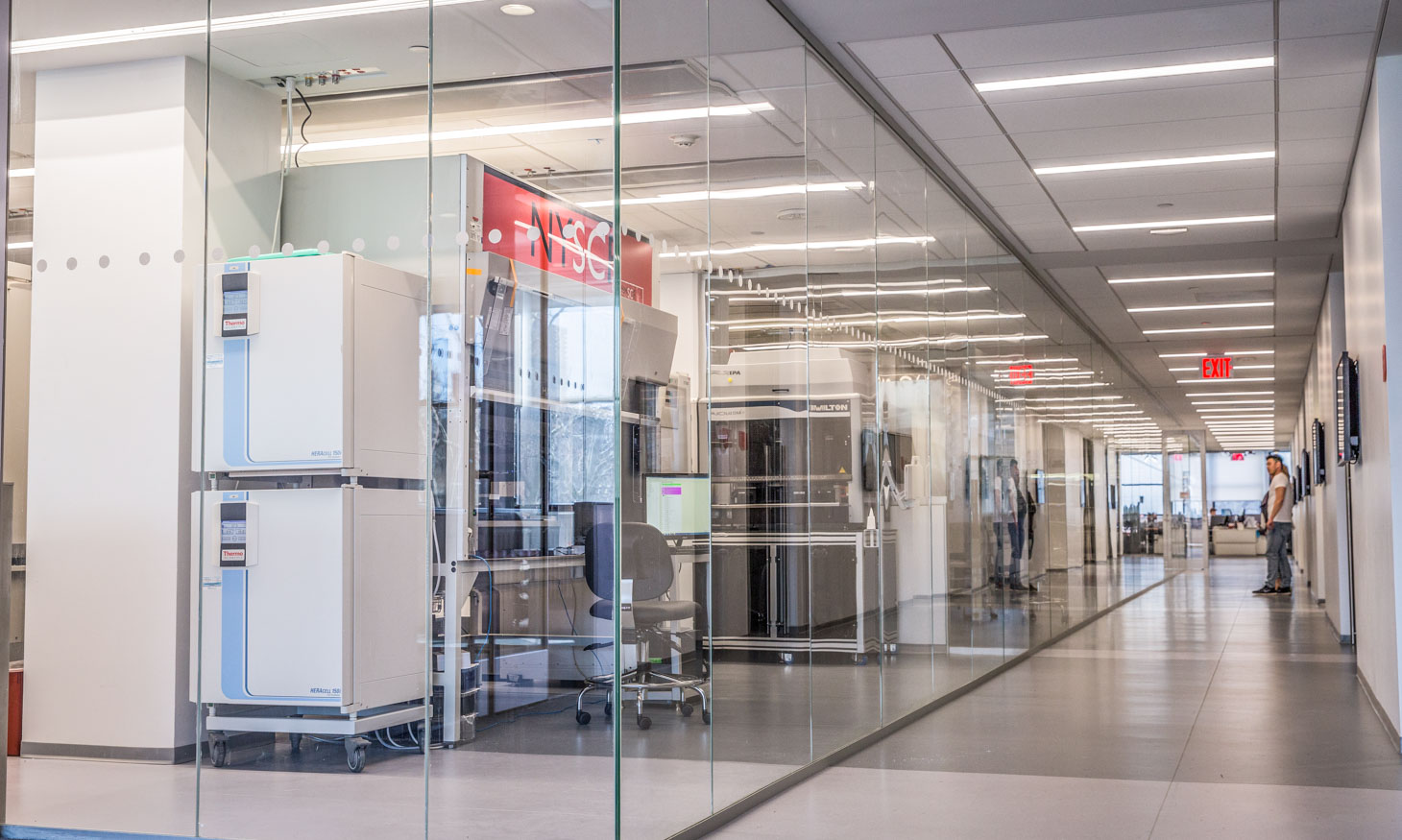New York Stem Cell Foundation

In March 2020 with the onset of COVID-19, the New York Stem Cell Foundation (NYSCF) Research Institute was deemed a critical infrastructure lab. A reduced on-site team was able to ensure the ongoing on-site progress of core research and technologies, including the NYSCF Global Stem Cell Array supported by SFI.
After building out a new cluster of robots in late 2019 and early 2020, the NYSCF team was able to create new workflows for turning stem cells into neurons and to integrate a high-content imaging machine into the process. NYSCF’s tailor-made machine learning algorithms now allow researchers to extract meaningful insights from the tens of thousands of microscopic images generated daily.
In related updates, the upgraded NYSCF Array has been used by Simons Foundation SFARI and SFARI collaborators with introductions to System 1 Biosciences and the Nancy Lurie Marks Foundation.
SFARI and System 1 Biosciences derived 50 induced pluripotent stem cells (iPSCs) from patients with genetically defined sub-groups of autism spectrum disorder. Following differentiation of these iPSCs into the cell types of the brain, they can be constructed into 3D organoids that can be used for human disease-relevant drug discovery.
SFARI and the Nancy Lurie Marks Foundation are working together to derive 100 induced pluripotent stem cells (and eventually an additional 100) from patients with autism spectrum disorder. Gene editing specific mutations will help understand their role in disease and potential opportunities for gene therapies.
COVID-19 research at NYSCF
In 2020, NYSCF’s chief goal was accelerating COVID-19 research by creating stem cell models for the scientific community that enable studies of how the virus affects human cells and the discovery of therapies that can stop it. They are pursuing this by converting stem cells into lung cells and other cells that are infected by the virus and responsible for the body’s reaction to the infection.

This approach is exactly what NYSCF uses for researching the other major diseases of our time: creating patient-specific stem cells from blood or skin samples with the NYSCF Global Stem Cell Array and converting these stem cells into the cells affected by disease. The COVID-19 research also benefits from NYSCF’s extensive, genetically diverse biobank of stem cell lines representing people with hundreds of underlying conditions that may influence their response to the virus.
NYSCF scientists are now optimizing the ‘recipes’ and methods for converting human stem cells into lung cells that are susceptible to SARS-CoV-2 infection, to accelerate studies of how the virus infects and affects lung cells, how genetics may make certain individuals more vulnerable to severe cases of the disease, and to test therapies with the potential to stop or prevent infection. They are collaborating with experts in virology and drug discovery who will leverage our cell models for these purposes. To clarify the role of genetics in individual responses to the infection, we are using CRISPR gene editing technology in our stem cell models to introduce or correct genetic mutations.
NYSCF–Robertson Stem Cell Investigator Alumna Shuibing Chen is using organoids (3D clusters of tissue made from stem cells) to study the human cells that are susceptible to SARS-CoV-2 infection and has identified drugs that block the virus’s entry into cells.
A rapid paper strip test developed by NYSCF–Robertson Stem Cell Investigator Alumnus Feng Zhang (based on the revolutionary CRISPR gene editing technology he helped pioneer) could allow point-of-care diagnosis of COVID-19 using materials that only cost about $6 per
A SARS-CoV-2 vaccine created by Moderna Therapeutics, founded by NYSCF–Robertson Stem Cell Investigator Alumnus Derrick Rossi was proven generally safe and able to stimulate antibody formation in early clinical trials.